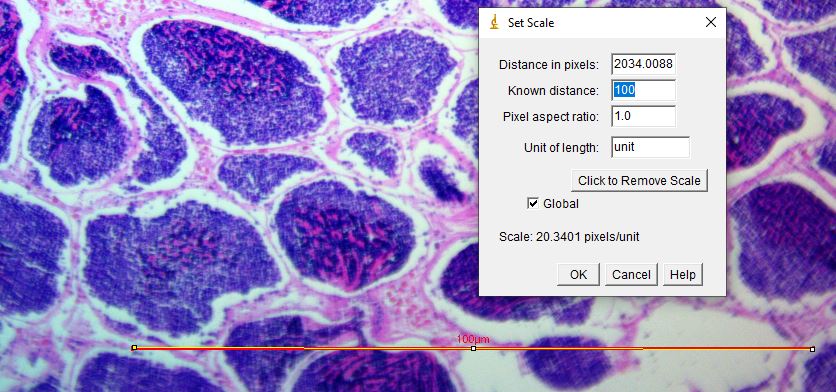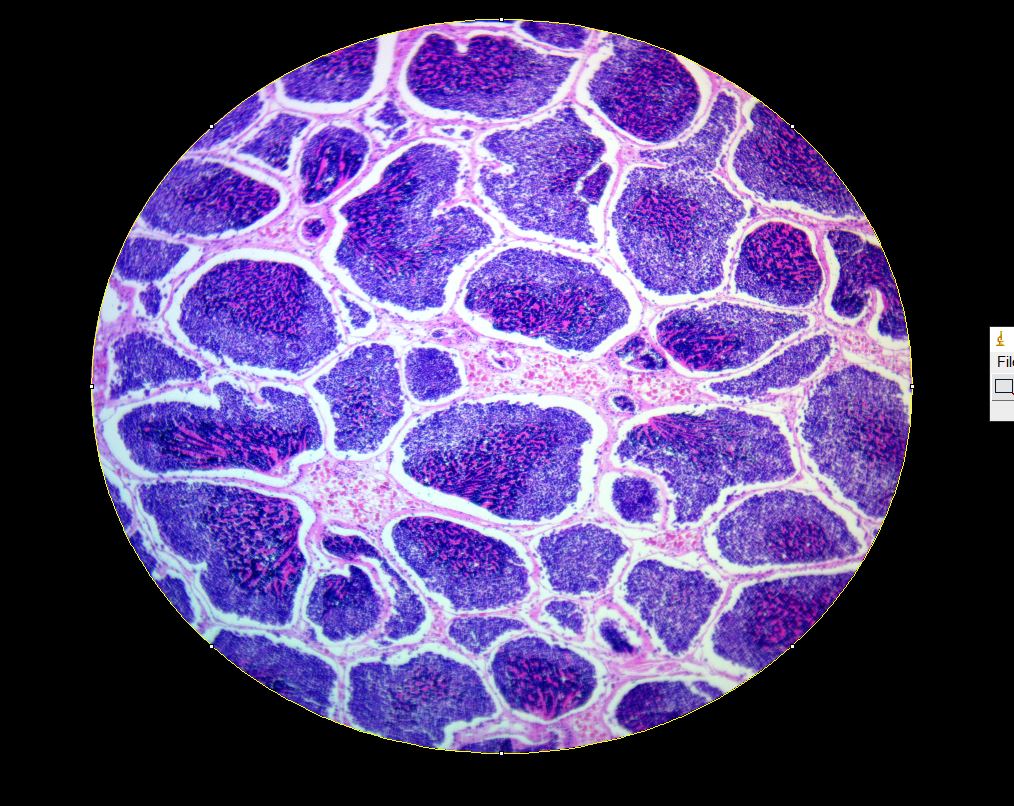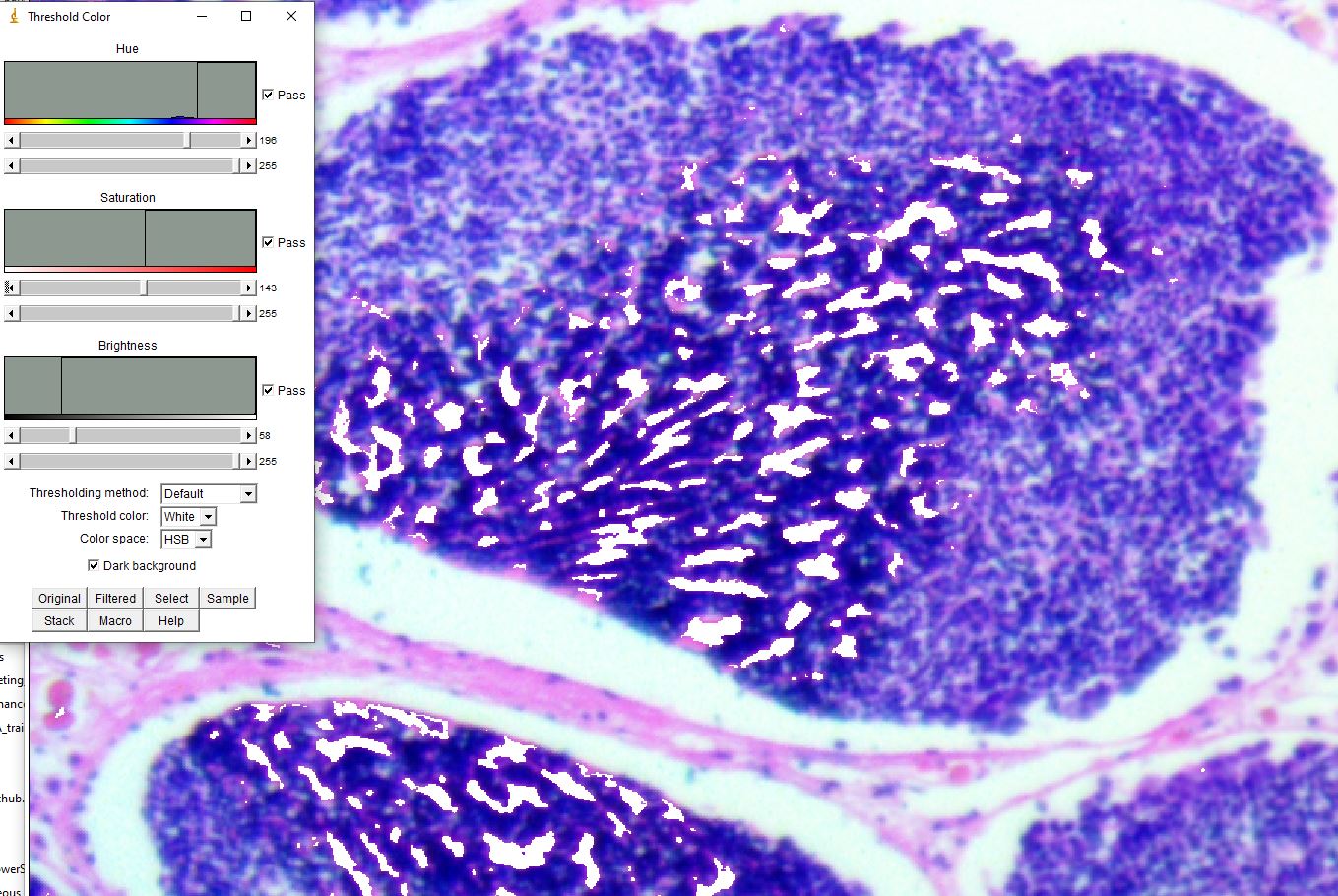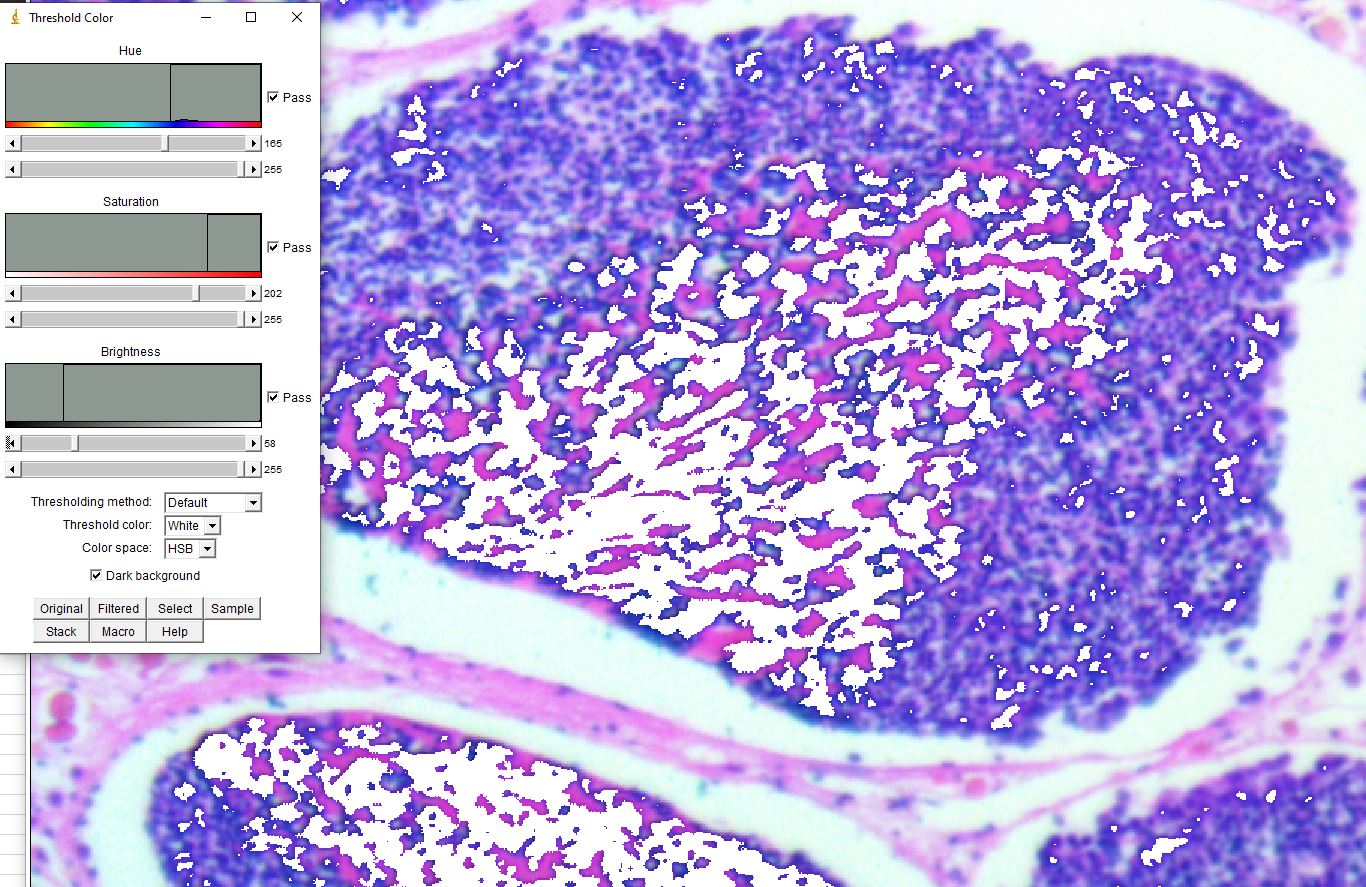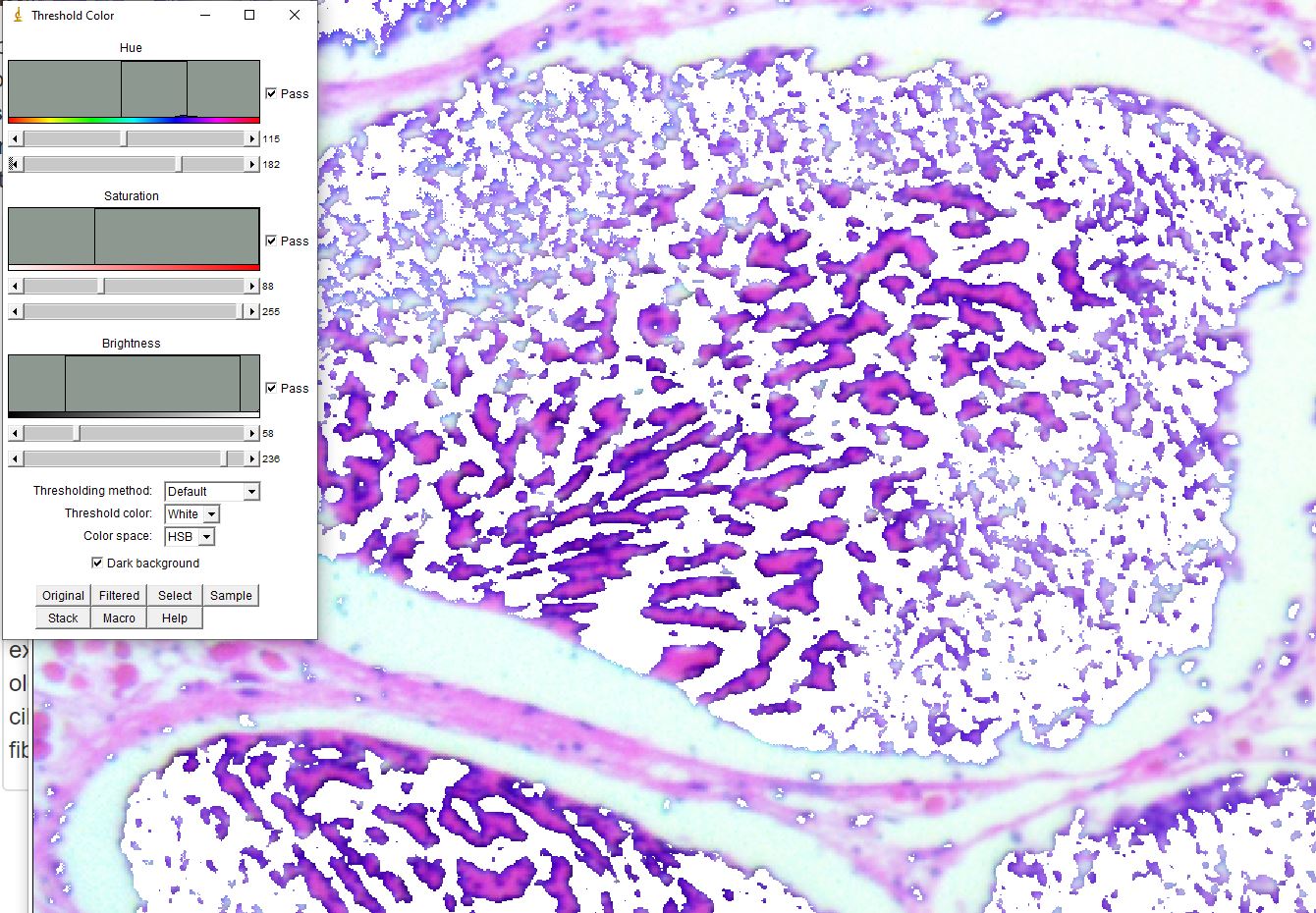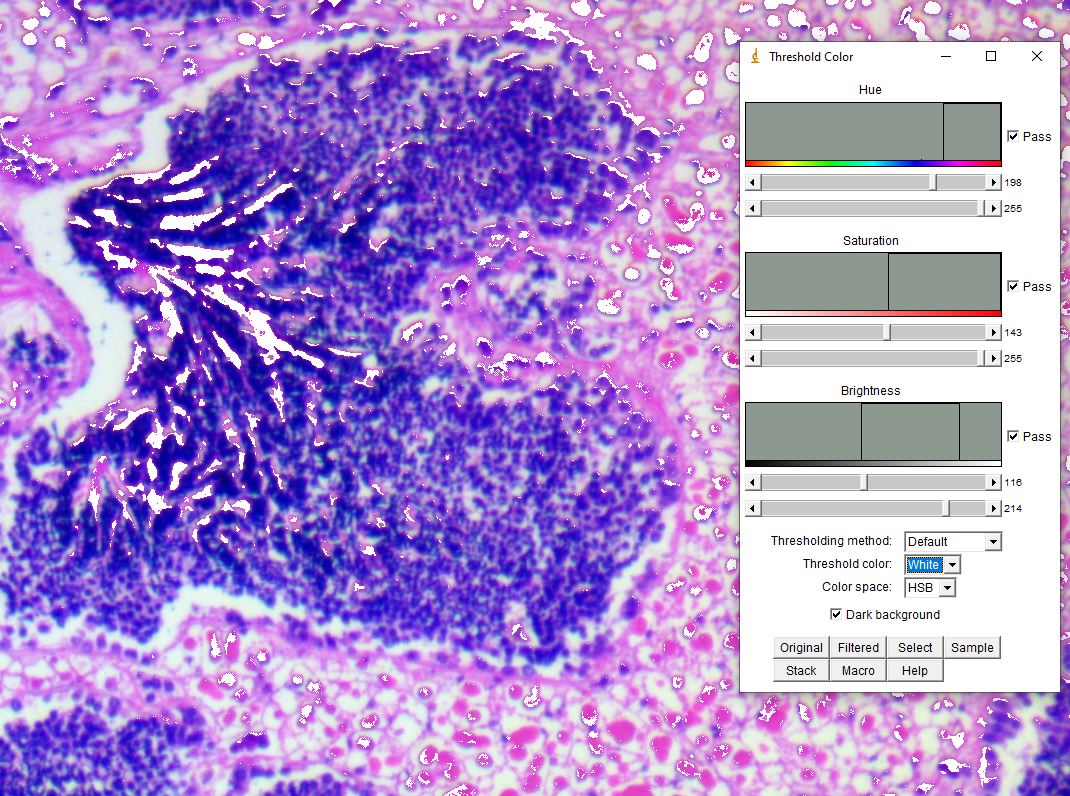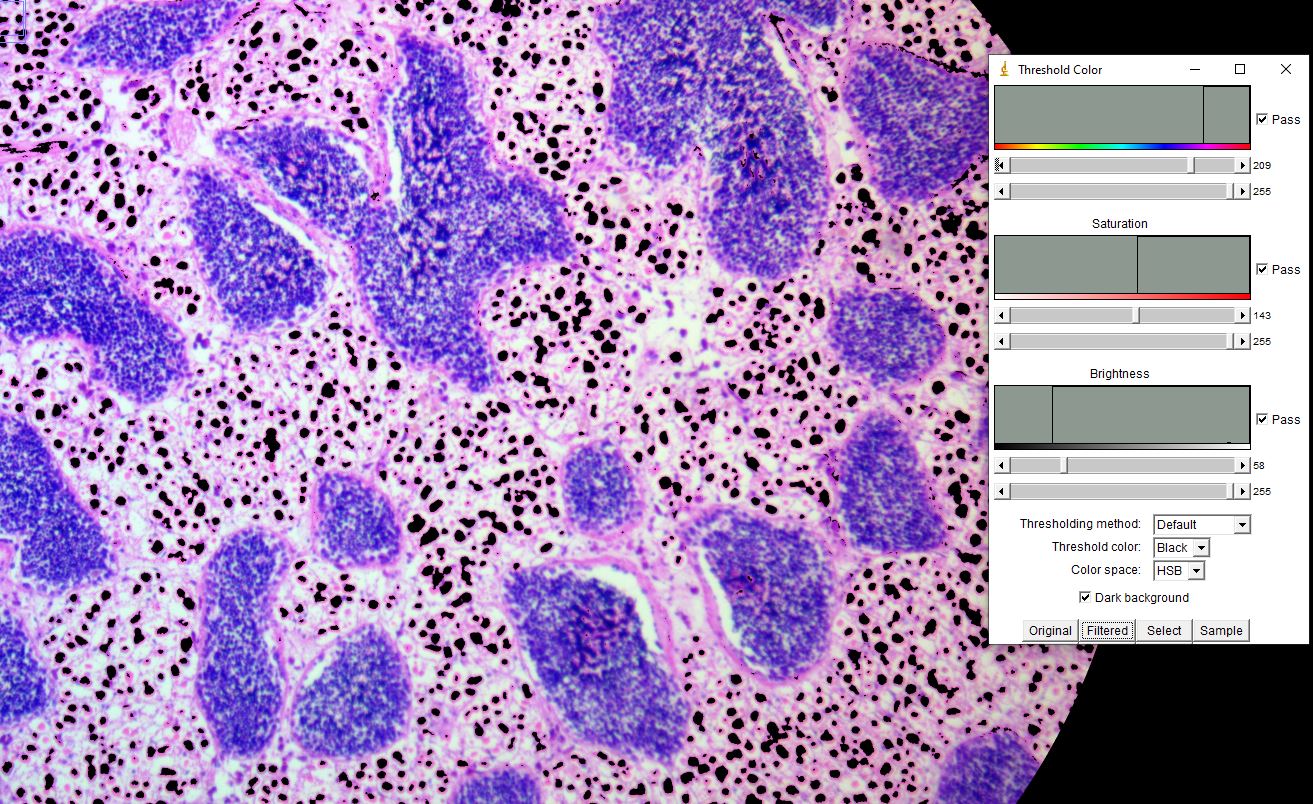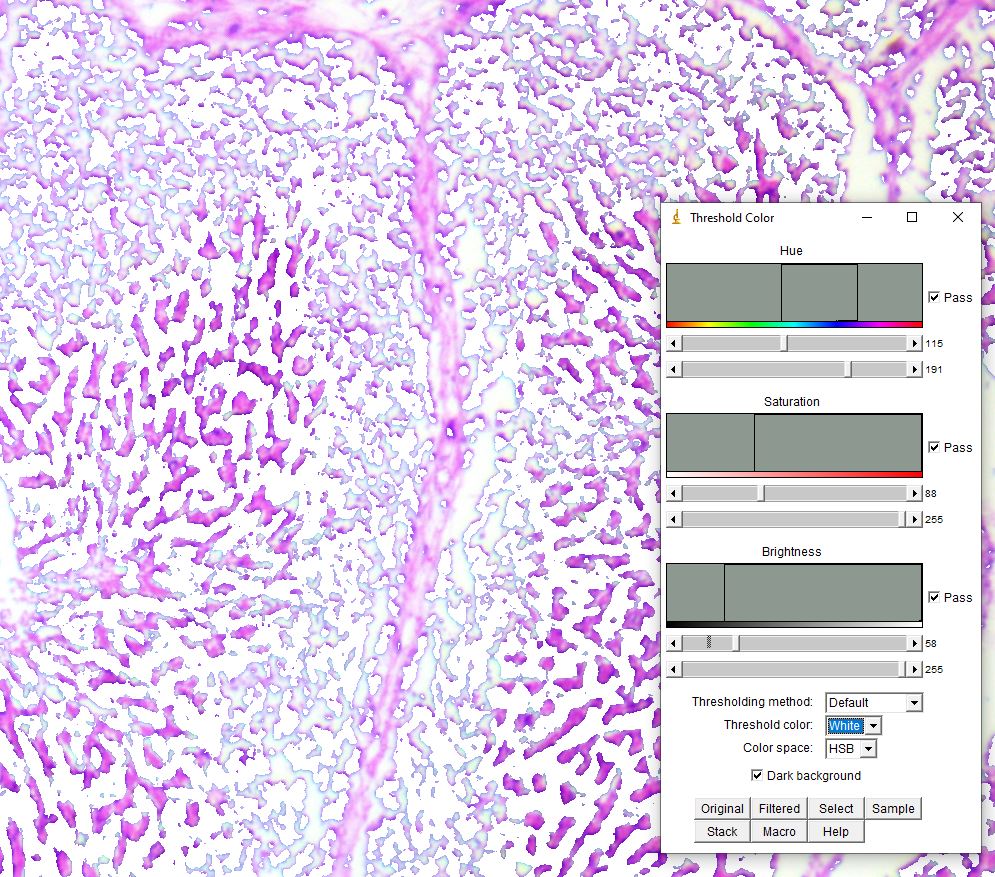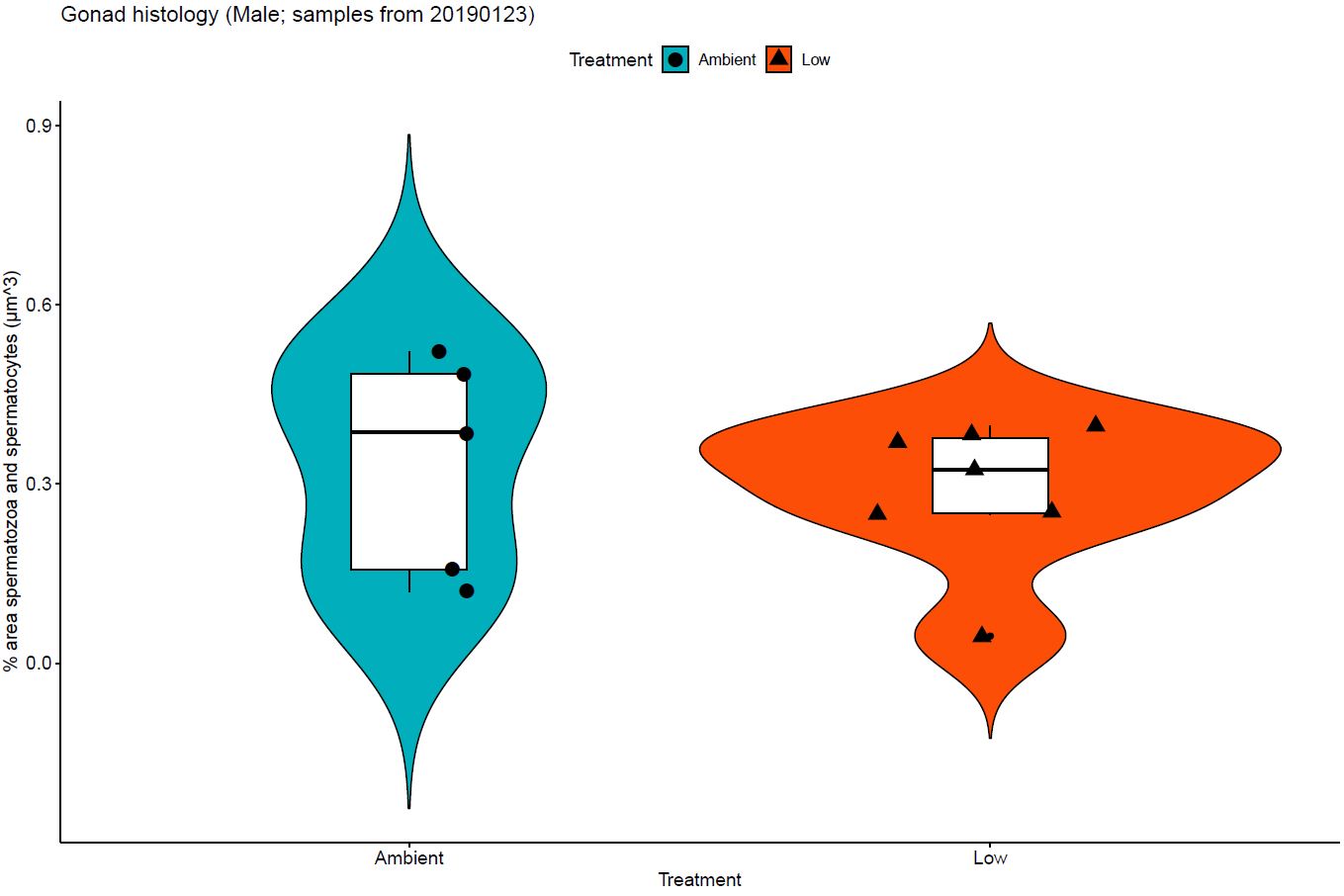Pacific geoduck gonad histology analysis (Image J)
Objective:
Outline the process in Image J for investigating the reproductive status of histology samples taken from adult Pacific geoduck broodstock in 2019.
- Note: broodstock were conditioned during gametogenesis under ambient vs. elevated pCO2 conditions!
Histology slide photos can be found here!
- https://drive.google.com/drive/folders/1AJU6q8X2eejtcLZ90_2LVnjOkcSQJVoy
Some important background for geoduck gonad histology
-
https://www.dfo-mpo.gc.ca/science/aah-saa/species-especes/shellfish-coquillages/geopath/gonads-eng.html
-Important terms from this link..
- acini
- lumen
- spermatocytes/spermatozoa
- vesticular connective tissue & glycogen/lipid cells
Image J Analysis
Example here: ID #041
1) Open the jpeg in ImageJ and set the scale
- zoom in to see the scale bar (i.e. 100um in this photo)
- left click the line tool and trace this scale bar
- go to… Analyze -> Set Scale
- type the distance in Known Distance
- select Global if the next photos are all at the same magnification
- select OK
2) Draw oval, measure total area, and clear outside
- Why? the corners of these histology photos are more blurry and darker than the center of the photos. Drawing this area provides a consistant color threshold for analysis downstream
- select the oval tool
- draw an oval/circle focused at the center of the histology photo
- A) Total Area
- Press Cntrl+m to measure the shape area
- Select Edit -> Clear Outside to remove the outside of the image and focus our analysis
3) Analysis with Color threshold
- Select Image -> Adjust -> Color Threshold
- this will open the window with saturation, Hue and Brightness
- Note: keep Threshold Method on Default; Threshold color can be changed throughout the following steps w/o interfering with measurements, color space HSB
- use the table (below) for the color threholds that capture the lumen, sptermatozoa, and spermatozoa & Spermatocytes
- after each setting… press Select to highlight and Cntrl+m to measure
- once complete, save the measurement window to a desired folder.
Table for settings
- Note: this is JUST for this specific exmplae #041
| Target Characteristic | Hue | Saturation | Brightness | Note |
|---|---|---|---|---|
| (A)Total Area | - | - | - | already recorded |
| (B) Lumen | 198:255 | 143:255 | 58:255 | |
| (C) Spermatozoa | 165:195 | 202:255 | 58:255 | |
| (D) Spermatozoa+Spermatocytes | 115:182 | 88:255 | 58:236 |
Screenshots with these settings…
B. Lumen
Sample #041
C. Spermatozoa
Sample #041
D. Spermatozoa+Spermatocytes
Sample #041
IMPORTANT! Errors in the process…
(1) Lumen + connective tissue and lipid cells overlap in hue/saturation
- Histology samples showcasing low reproductive status (relative to #041 above) have a higher percent cover of conncetive tissue with lipid cells. Unfortunately, the hue/saturation of the lipid cells overlaps with the lumen.
(2) Spermatocytes + spermatozoa overlap in hue/saturation
- Spermatozoa and spermatocytes can not be determined - solely the total acini space (minus lumen) is possible in these samples (example below)
SOLUTION?
- The purple dye of the cyes and zoa is distinct in all histology slides
- Focus on the percent cover of reproductive cells per sample (spermatocytes + spermatozoa)
- Spermatocytes+spermatozoa / Total area == main metric between samples
Calculations
- Use the AREA output by ImageJ measurements for the following…
- Note: the letters used here refer to the the table (above)
(A) Simple option…
..in light of inconsistencies between samples!
Spermatocytes+Spermatozoa / Total area == main metric between samples
RESULTS
- GITHUB REPO: https://github.com/SamGurr/Pgenerosa_histology
- not significant : T-test; t = 0.47357, df = 6.4737, p-value = 0.6514
(B) Most comprehensive option…
Total image area = A
Lumen = B
Spermatozoa = C
Spermatozoa + Spermatocytes = D
E; Spermatocytes = C - D
F; Total acini area = D + B
G; Vesticular connective tissue = A - F
correct for total area
divide targets (lumen, total acini area, spermatozoa, spermatocytes, vesticular connective tissue) by Total image area to compare the reproductive status between individuals and correct for the oval area selected.

